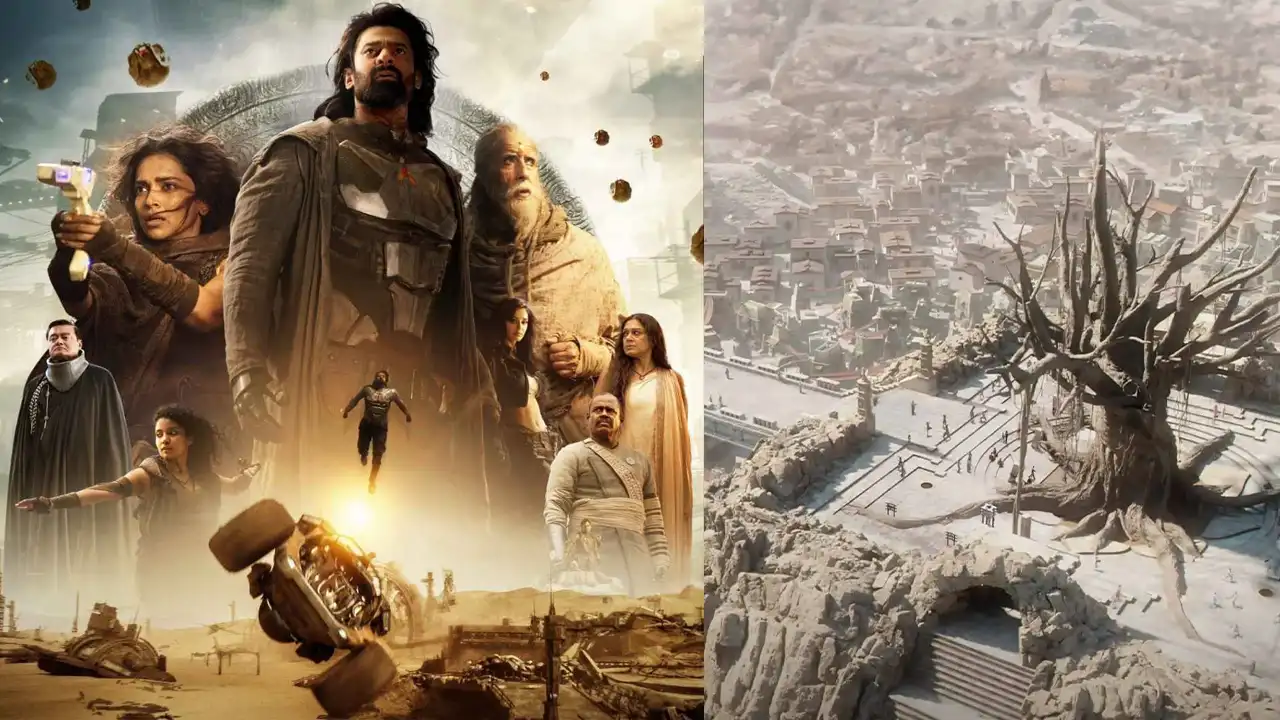
Nag Ashwin’s Kalki 2898 AD featuring Prabhas, Amitabh Bachchan, Deepika Padukone, and Kamal Haasan has captured the imagination of audiences worldwide since its release on June 27. The film, set in a dystopian world intertwines Hindu mythology with futuristic themes. At the heart of the story is the mission to protect the unborn child of Deepika Padukone’s character who is prophesied to be Kalki, the tenth avatar of Lord Vishnu.
One element that has sparked particular interest among viewers is the depiction of the village Shambala. Many initially believed Shambala to be a fictional creation for the film. However, Shambala is deeply rooted in Hindu mythology and carries significant historical and spiritual connotations.
The Mythological Background of Kalki
Kalki is revered as the final avatar of Vishnu, the preserver and protector within the Hindu trinity. The concept of an avatar signifies a divine descent into the material world to restore cosmic order. The Garuda Purana, an ancient Hindu scripture, lists ten avatars of Vishnu, with Kalki being the tenth and final one. This avatar is destined to appear at the end of the current age, known as Kali Yuga, to eradicate evil and usher in a new era of righteousness.
Kalki’s first mention appears in the Mahabharata, one of the major Sanskrit epics of ancient India. Over time, his legend has been expanded upon in various texts, including the Kalki Purana, a relatively recent composition from Bengal dating back to the 18th century.
The Birth and Life of Kalki in Shambala
According to the Kalki Purana, Kalki is born to Vishnuyashas and Sumati in the village of Shambala. His birth is said to occur on the thirteenth day of the waxing moon. From a young age, Kalki is instructed in holy scriptures and trained in military arts under the guidance of Parashurama, the sixth avatar of Vishnu.
As the legend goes, Kalki worships Shiva, who grants him divine gifts in return for his devotion. These include a white horse named Devadatta, a manifestation of Garuda, a powerful sword adorned with jewels, and a parrot named Shuka, who possesses knowledge of the past, present, and future. Armed with these divine tools and aided by other deities, saints and righteous kings, Kalki battles evil forces, ultimately restoring dharma (righteousness) but not bringing about the end of existence. After his mission is complete, he returns to Shambala inaugurates a new Yuga, and eventually ascends to Vaikuntha, the abode of Vishnu.
Shambala: The Historical and Spiritual Significance
Shambala, as described in Hindu mythology is more than a mere village; it is a symbol of divine origin and purity. Historically, Shambala is identified with the present-day city of Sambhal in the Uttar Pradesh state of India. This ancient city, deriving its name from Shambhu, an epithet of Shiva has been an important settlement since ancient times, falling within the Panchala kingdom and the Mauryan Empire.
Nag Ashwin’s “Kalki 2898 AD” has not only entertained but also educated audiences about the rich tapestry of Hindu mythology. The film’s portrayal of Shambala reminds us of the deep historical and spiritual roots that underpin many of the world’s myths and legends. As viewers leave the theater, they carry with them a newfound curiosity about the legends of Kalki and Shambala, bridging the gap between ancient mythology and gripping storytelling.












